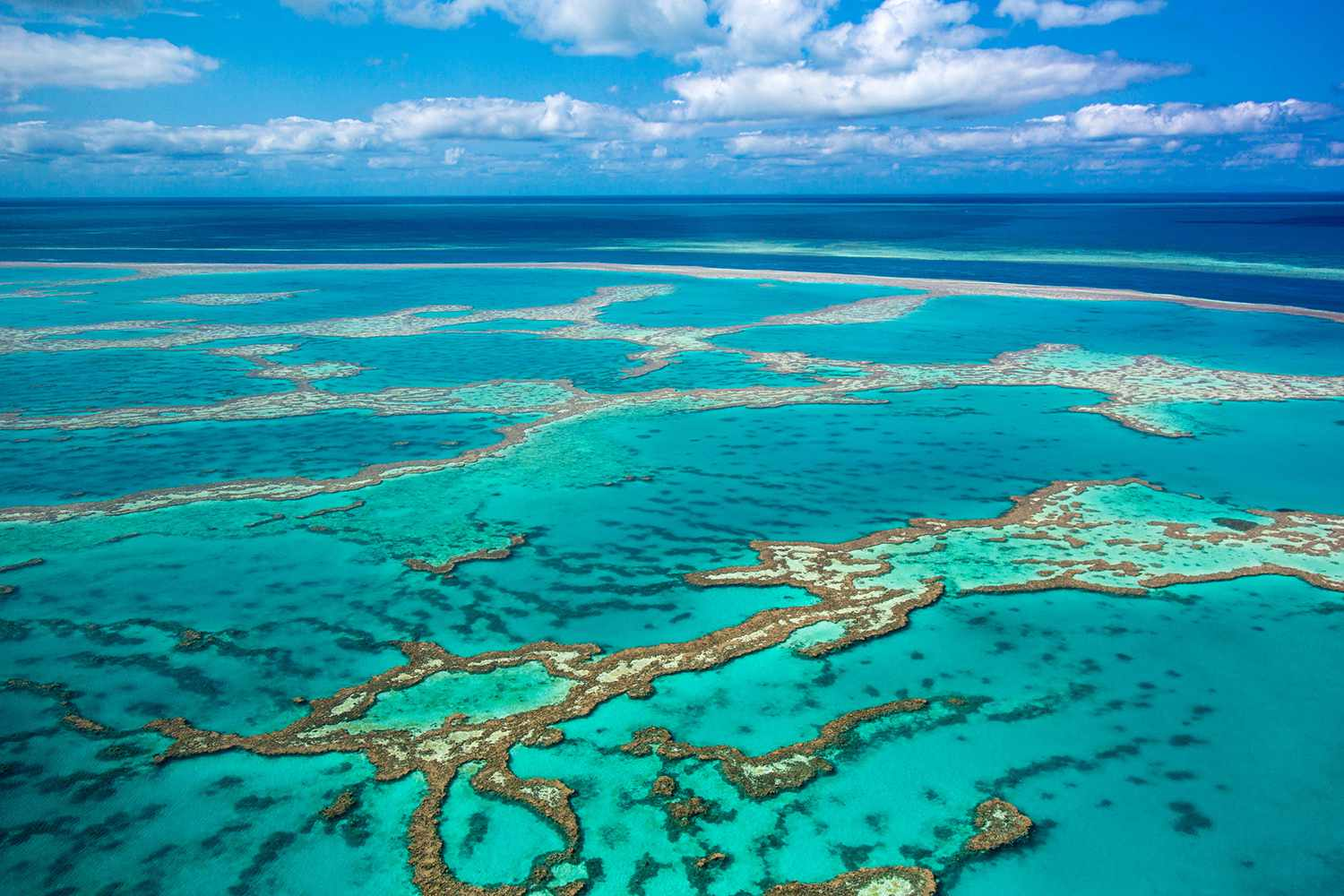Barrier islands are narrow strips of land that run parallel to the mainland coast, separated from it by a shallow sound, bay, or lagoon. These unique geographical features are formed by the accumulation of sand and sediment deposited by waves, currents, and tides over thousands of years. Barrier islands play a vital role in protecting the mainland from the full force of ocean waves, storms, and hurricanes. They also provide critical habitats for a wide variety of plants and animals, some of which are found nowhere else on Earth.
In this article, we will explore the top 12 largest barrier islands in the world, spanning across several continents and oceans. From the windswept dunes of the Texas Gulf Coast to the tropical paradise of Fraser Island in Australia, each of these islands has its own unique characteristics, ecology, and history. We will delve into the geology, wildlife, and human impact on these remarkable landforms, and highlight their significance as natural wonders and valuable resources.
Padre Island, United States
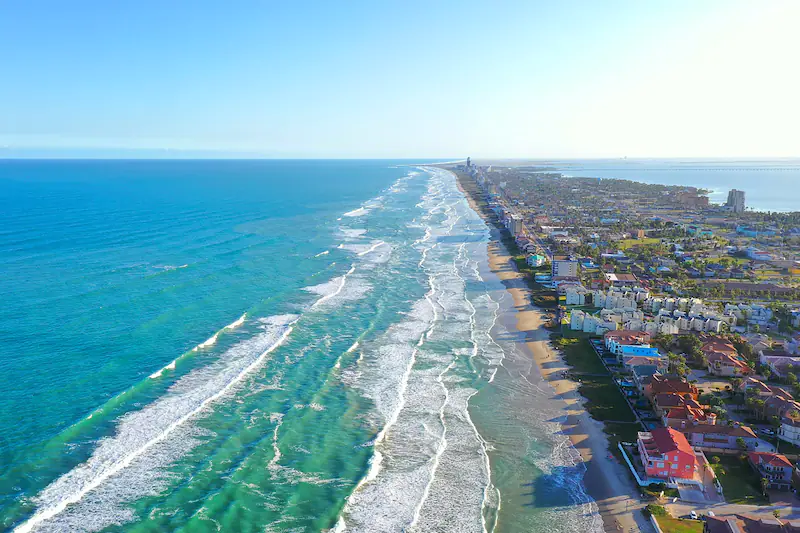
Stretching over 113 miles along the Texas Gulf Coast, Padre Island is the longest barrier island in the world. It is divided into two sections: North Padre Island, which is mostly developed and home to the popular tourist destination of Corpus Christi, and South Padre Island, which is largely undeveloped and protected as part of the Padre Island National Seashore.
The island is known for its wide, sandy beaches, rolling dunes, and diverse wildlife, including over 380 species of birds, several species of sea turtles, and the endangered Kemp’s ridley sea turtle, which nests on the island’s beaches. Padre Island also has a rich history, with evidence of human habitation dating back over 10,000 years, and played a significant role in the early exploration and settlement of the Texas coast by Spanish and American settlers.
Farewell Spit, New Zealand

Located at the northern tip of New Zealand’s South Island, Farewell Spit is a 26-mile long sand spit that extends eastward into the Tasman Sea. It is the longest sand spit in New Zealand and one of the longest in the world. The spit is composed entirely of sand and is constantly shifting and changing shape due to the action of wind and waves.
Farewell Spit is an important bird habitat and is home to over 90 species of birds, including the rare and endangered New Zealand fairy tern. It is also a popular spot for whale watching, as several species of whales, including humpback and southern right whales, can often be seen offshore. The spit is managed as a nature reserve by the New Zealand Department of Conservation and is open to the public for guided tours and walks.
Curonian Spit, Lithuania/Russia

The Curonian Spit is a 61-mile long sand dune peninsula that separates the Curonian Lagoon from the Baltic Sea. It is shared between the countries of Lithuania and Russia and is a UNESCO World Heritage Site. The spit is home to the highest moving sand dunes in Europe, some reaching heights of over 200 feet.
The Curonian Spit is also an important cultural and historical site, with evidence of human habitation dating back to prehistoric times. It has been inhabited by various Baltic tribes, Teutonic knights, and Prussian and Lithuanian settlers over the centuries. Today, the spit is a popular tourist destination known for its unique landscape, picturesque fishing villages, and outdoor recreational opportunities.
Fraser Island, Australia

Located off the coast of Queensland, Australia, Fraser Island is the largest sand island in the world, stretching over 76 miles long and 14 miles wide. It is also the only place on Earth where tall rainforests grow on sand dunes, thanks to the unique combination of fresh water perched above the salty groundwater.
Fraser Island is home to a diverse array of wildlife, including dingoes, wallabies, possums, and over 350 species of birds. It also has several freshwater lakes, including Lake McKenzie, a crystal-clear perched lake surrounded by white silica sand. The island is a popular tourist destination and is managed as a World Heritage site by the Queensland Parks and Wildlife Service.
Hatteras Island, United States
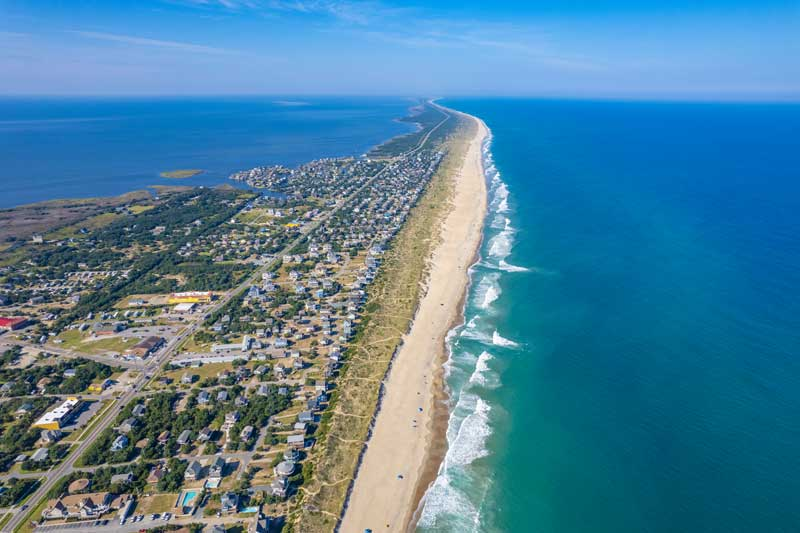
Part of the Outer Banks barrier island chain off the coast of North Carolina, Hatteras Island is a 42-mile long island known for its pristine beaches, historic lighthouses, and excellent fishing and surfing opportunities. The island is home to the Cape Hatteras National Seashore, which protects over 30,000 acres of beaches, dunes, marshes, and maritime forests.
Hatteras Island has a long and storied history, with evidence of Native American habitation dating back over 1,500 years. It was also the site of the famous “Lost Colony” of Roanoke, the first English settlement in the New World, which mysteriously disappeared in the late 16th century. Today, the island is a popular vacation destination and is accessible by car via the Herbert C. Bonner Bridge from the mainland.
Sylt, Germany

Sylt is the largest North Sea island in Germany, stretching over 22 miles long and up to 1.2 miles wide. It is known for its long, sandy beaches, dunes, and thatched-roof cottages, and is a popular vacation spot for Germans and other Europeans. The island is also an important habitat for migratory birds and is home to several nature reserves.
Sylt has a rich history dating back to the Stone Age, with evidence of human habitation and burial mounds found on the island. It has been ruled by various kingdoms and duchies over the centuries, including Denmark and Prussia, before becoming part of Germany in the late 19th century. Today, the island is accessible by car, train, or ferry and is a popular destination for beach-goers, nature lovers, and water sports enthusiasts.
Ameland, Netherlands
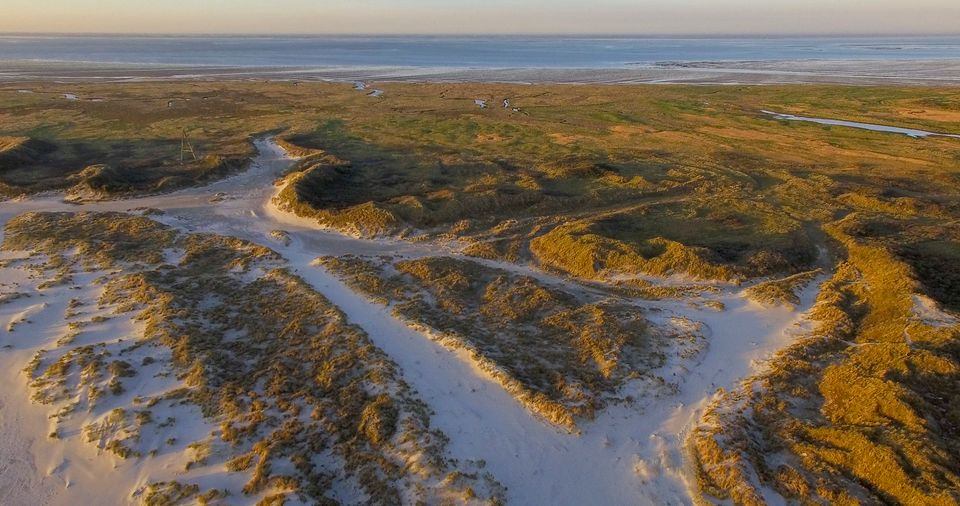
Ameland is one of the West Frisian Islands off the north coast of the Netherlands, stretching over 14 miles long and up to 3 miles wide. It is known for its wide, sandy beaches, dunes, and salt marshes, and is a popular spot for beachcombing, bird watching, and water sports.
The island has a long history of human habitation, with evidence of settlements dating back to the Iron Age. It has been ruled by various Dutch provinces and kingdoms over the centuries, and played a significant role in the Dutch Resistance during World War II. Today, Ameland is a popular tourist destination and is accessible by ferry from the mainland.
Assateague Island, United States

Located off the coast of Maryland and Virginia, Assateague Island is a 37-mile long barrier island known for its wild ponies, pristine beaches, and diverse wildlife. The island is divided into three sections: the Assateague Island National Seashore, managed by the National Park Service; the Assateague State Park, managed by the Maryland Park Service; and the Chincoteague National Wildlife Refuge, managed by the U.S. Fish and Wildlife Service.
The wild ponies on Assateague Island are believed to be descendants of horses brought over by Spanish explorers in the 16th century. They have adapted to the harsh island environment and are a popular attraction for visitors. The island is also home to a variety of other wildlife, including deer, foxes, and over 300 species of birds. Visitors can enjoy camping, hiking, fishing, and kayaking on the island, which is accessible by car from the mainland.
Ocracoke Island, United States
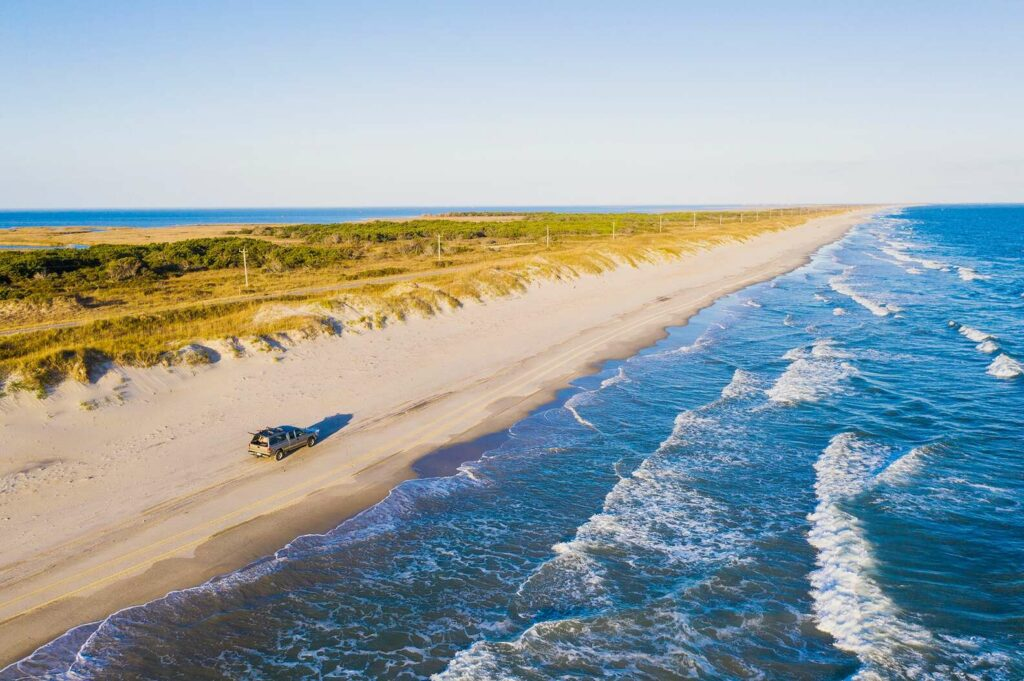
Part of the Outer Banks barrier island chain off the coast of North Carolina, Ocracoke Island is a small, remote island known for its pristine beaches, historic lighthouse, and laid-back atmosphere. The island is only accessible by ferry or private boat, which has helped preserve its unspoiled natural beauty and unique character.
Ocracoke Island has a rich history dating back to the early days of European exploration, with the famous pirate Blackbeard using the island as a hideout in the early 18th century. The island also played a significant role in World War II, with the U.S. Navy establishing a base there to defend against German U-boats. Today, the island is a popular destination for beach-goers, history buffs, and those seeking a quiet, off-the-beaten-path vacation spot.
Galveston Island, United States

Located off the coast of Texas, Galveston Island is a 27-mile long barrier island known for its historic architecture, amusement parks, and beaches. The island is home to the city of Galveston, which was once a major port and center of commerce in the 19th century, but was devastated by a massive hurricane in 1900 that killed over 6,000 people.
Today, Galveston Island is a popular tourist destination, with attractions such as the Moody Gardens amusement park, the Galveston Island Historic Pleasure Pier, and the Strand Historic District, which features well-preserved Victorian-era buildings. The island is also known for its beaches and water sports, including surfing, fishing, and kayaking. Visitors can access the island by car via the Galveston Causeway from the mainland.
Sea Island, United States

Located off the coast of Georgia, Sea Island is a small, exclusive barrier island known for its luxury resorts, golf courses, and pristine beaches. The island has a long history dating back to the early 20th century, when it was developed as a winter retreat for wealthy Northerners.
Today, Sea Island is home to the historic Cloister Hotel and several other high-end resorts, as well as three championship golf courses that have hosted numerous PGA Tour events. The island is also known for its natural beauty, with miles of unspoiled beaches and marshlands that are home to a variety of wildlife, including loggerhead sea turtles and several species of migratory birds. Access to the island is restricted to resort guests and property owners.
Jekyll Island, United States

Located off the coast of Georgia, Jekyll Island is a 7-mile long barrier island known for its unspoiled natural beauty, historic sites, and outdoor recreational opportunities. The island was once a private retreat for some of America’s wealthiest families, including the Rockefellers and Vanderbilts, who built elaborate “cottages” there in the late 19th and early 20th centuries.
Today, Jekyll Island is a state park and is open to the public for day visits and overnight stays. Visitors can explore the island’s historic district, which includes several restored cottages and the Jekyll Island Club Hotel, a National Historic Landmark. The island is also known for its beaches, bike trails, and golf courses, as well as its diverse wildlife, including nesting sea turtles and hundreds of species of birds. Access to the island is by car via a causeway from the mainland.
Conclusion
The world’s largest barrier islands are a testament to the power and beauty of nature, as well as the resilience and adaptability of the plants, animals, and people that call them home. From the wild ponies of Assateague Island to the luxury resorts of Sea Island, each of these islands has its own unique character and history that make them special places to visit and explore.
As we have seen, barrier islands play a vital role in protecting the mainland from the full force of the ocean, as well as providing critical habitats for a wide variety of species. However, they are also highly vulnerable to the impacts of human activity, including development, pollution, and climate change. It is up to all of us to work together to protect and preserve these natural wonders for future generations to enjoy.
Whether you are a beach-goer, nature lover, history buff, or adventure seeker, the world’s largest barrier islands have something to offer everyone. So pack your sunscreen, grab your binoculars, and set out to discover the magic and mystery of these incredible places for yourself.

